
Mass Effect 3 We talked to Bioware character artists about their experience creating a great mix of characters from creatures to sci-fi models.
It is almost two years to the day since our interview with BioWare for their work on Mass Effect 2. One of the most ambitious game series in history has now been brought to its conclusion with Mass Effect 3 and Pixologic is delighted to have been able to speak with the artists one last time.
Whatever else might be said, the art of Mass Effect has grown increasingly spectacular with each new installment. After ME2 we were wondering how the bar could possibly be raised, yet Rodrigue and his team managed to do exactly that in ME3. We hope you enjoy this interview as much as we have enjoyed putting it together!
Herbert Lowis: Senior Character artist
Rafael Grassetti: Senior Character artist
Rion Swanson: Senior Character artist
Rodrigue Pralier: Lead Character artist
How long have you been working in the industry?
Herbert: I have been working in the industry for seven years so far. My first job was to work for Infinity Ward on Call of Duty: Modern Warfare. The very first in-game model that I ever built was a pickup truck for the game. It was fun, yet challenging because I had never built a vehicle before. After that, I joined Bioware on Dragon Age: Origins. Since then, I have also worked on some game cinematics such as for Saints Row: The Third, Dawn of War 2 and others.
Rafael: I’ve been working in the industry for the past five years. I was working as a freelancer before coming to Bioware so I had the chance to experience a lot of different types of projects and studios. The Mass Effect team is one of the best I have had the pleasure to work with. Especially the character art team; we learn from and have fun with each other every single day.
Rion: In total, about eleven years. I started with texturing characters and vehicles on Star Wars: Knights of the Old Republic and then moved into modeling after that.
Rodrigue: I started in 2002. I was first working on character concepts and FX. I then moved on 3D environments for a few years and have been focusing on making 3D characters since 2005.

How long have you been working on Mass Effect at this point?
Rafael: I started to work at Bioware in 2011, so I worked on Mass Effect 3 for six months.
Rion: I joined the Mass Effect team part of the way through Mass Effect 2. So for me, it’s been around four years total working on content for the Mass Effect universe.
Rodrigue: I arrived at Bioware at the end of ME2 and have been part of the ME team for a bit more than two years.
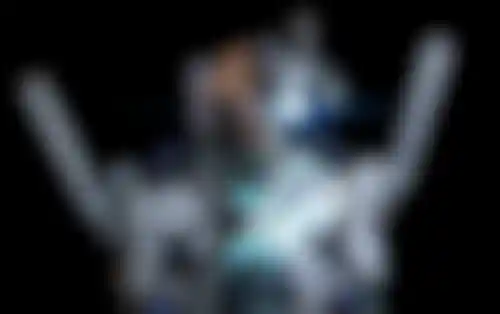

What has the experience been like?
Rafael: Mass Effect is a great title that allows artists to have a great mix between creatures and sci-fi models. I think it’s a very rewarding and defiant project for any character artist.
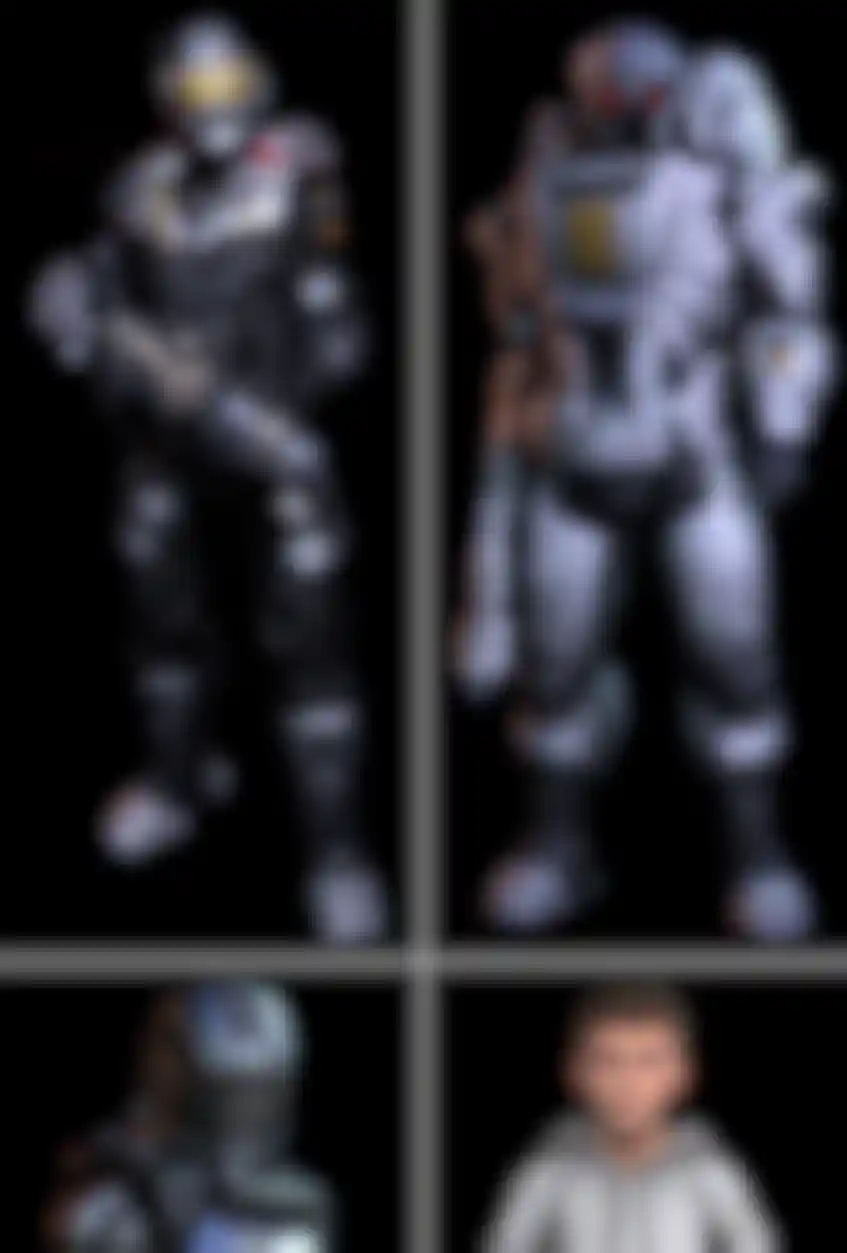
Rion: The experience has been a really enjoyable one, yet challenging at the same time. I’ve been pushed to grow; to create higher and higher quality models while learning to work faster as I go. A huge part of an experience like this is really about the people you work with. I’ve had the pleasure of working with many very skilled people through this time. The direction from Derek Watts (Art Director) and Casey Hudson (Project Director/Executive Producer) has been very focused the whole way through. This is great for us character artists because we get sign-offs on model changes in a quick and efficient way to allow us to continue working for the most part uninterrupted.
Working with other artists who care so much about continual improvement of all the character, creature, weapon and vehicle assets is really inspiring. It was basically a continual haul with many extra hours put in. Pretty much all of the older assets from the original game were updated at one point or another. I felt that the quality bar was continually being pushed higher, which in turn pushed me more for each model I worked on. I really appreciate the feedback, critique, and help I’ve been given through my time working on these games. Thanks to Derek Watts, Jaemus Wurzbach, Rodrigue Pralier, Kolby Jukes, Herbert Lowis, Rafael Grassetti, Ray Lim, Cristian Enciso, Brian Sum, Ben Huen, Jeff Vanelle, Scott Mitchell, Ken Finlayson and all the other Mass Effect artists I had the pleasure of working with.
Rodrigue: It has been amazing! I have been working in the video game industry for more than ten years and this has been my best experience so far. All the people of the ME team are passionate about their work and the video game industry. It's very motivating to see all the teams pushing for quality and working hard to deliver a great game. And the best part for me is that everyone is super nice so it feels like I'm working hard but I'm also hanging out with my buddies.
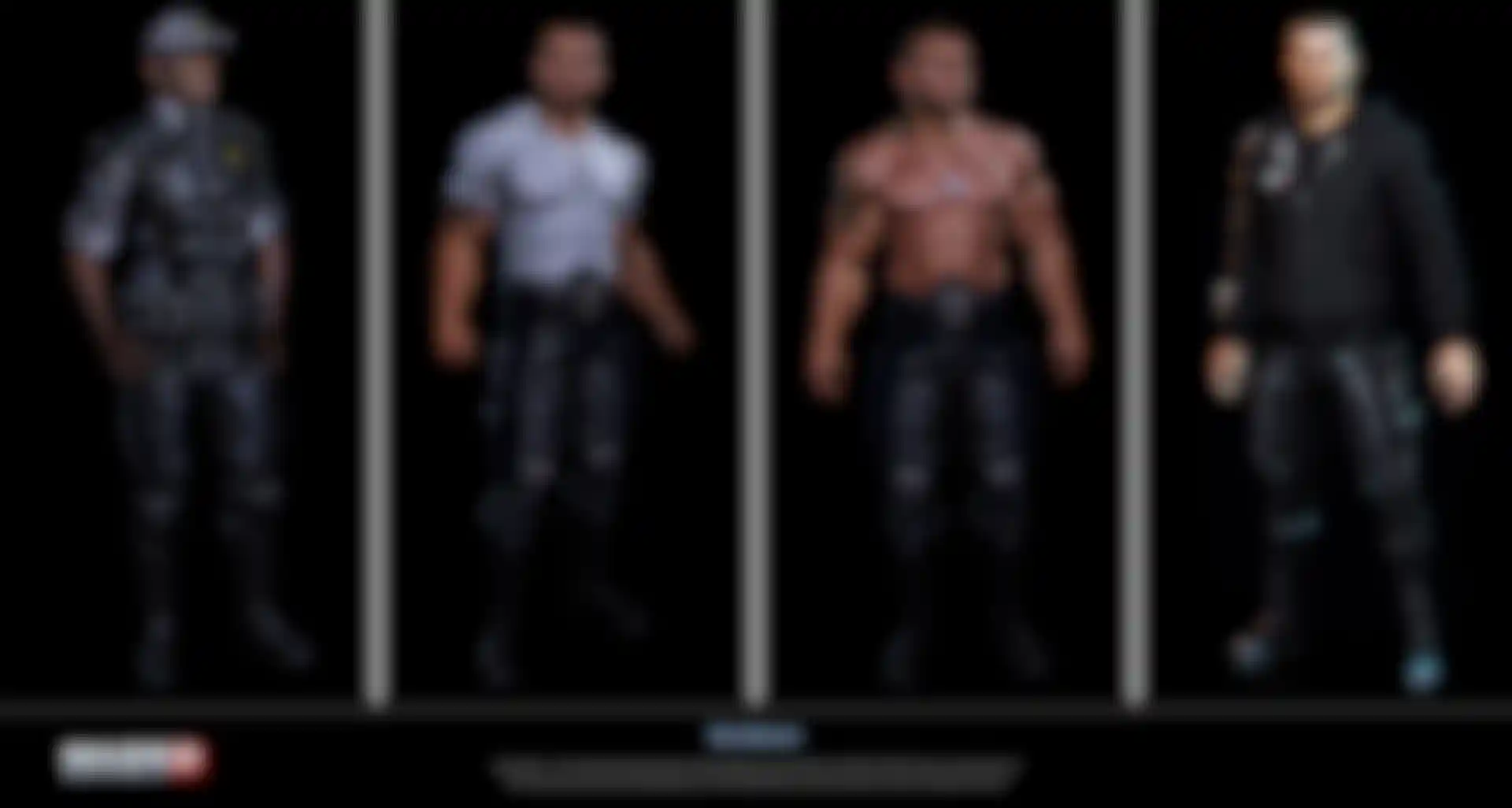
Of course, the software industry moves at lightning speed, so the tools have evolved dramatically since you began work. How has that impacted you the most?
Herbert: Polygon limitation is now a thing of the past because now most software can handle millions of polygons without any major lag. My primary modeling tool for hard surface modeling is XSI and a lot of my models are millions of polygons in my XSI scenes. There is a lot of software to choose from and they all have their own strengths and weaknesses. For example there are now great tools for generating AO, UV’s, etc. It is because of this that I feel character artists spend less time dealing with technical issues, allowing them to focus more on the art creation process.
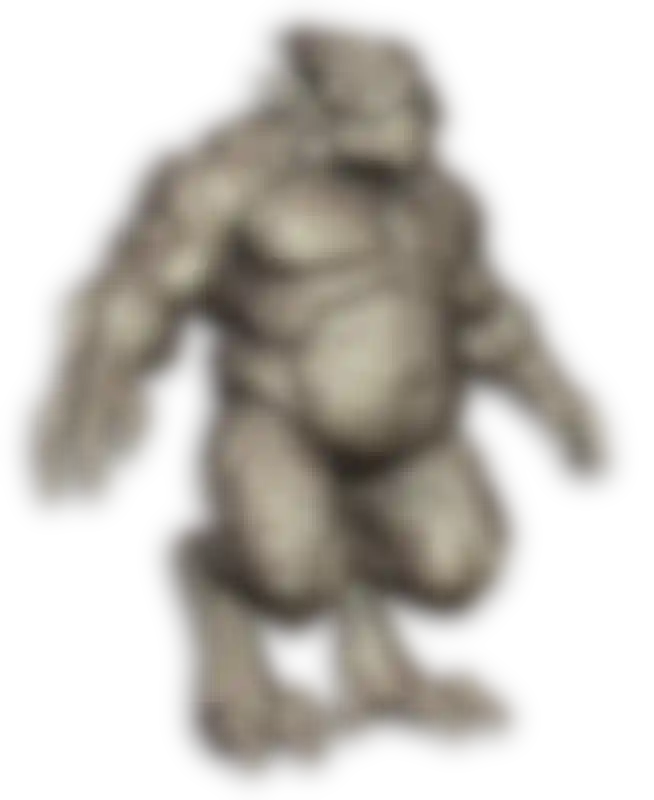
Rafael: Tools that have been developed which speed up the process affected the pipeline a lot. ZBrush tools like Decimation Master, SubTool Master and UV Master are very handy on every model. Most recently, DynaMesh is a very amazing tool that helps a lot when sketching a new idea for a character.
Rodrigue: The biggest impact was on time and quality. We can now really go to town with the details on our characters. ZBrush and 3DS Max allow us to work faster, yet also put more and more details and love into our characters with a lot of flexibility. (Layers, etc.) But of course having great high-res models is not enough and you need a good engine with nice rendering and nice shaders to really show all the hard work put into the high-res models. On that side we were very lucky on ME3; we had a very nice budget for the polycounts of our characters and I was able to re-work some of the shaders to add more reflection and sweetness to our armor. If you compare the rendering between ME1, ME2 and ME3 you can see a big jump in terms of character details and quality between each installment.
Tools and tech are very important but on top of it the biggest impact for us came from the Art Director and the concept artists. It's a great feeling to see a new concept and think, "Wow! This guy looks awesome I want to work on it!" and you know that ZBrush and the ME3 engine give you all the tools you need to deliver it without losing quality.
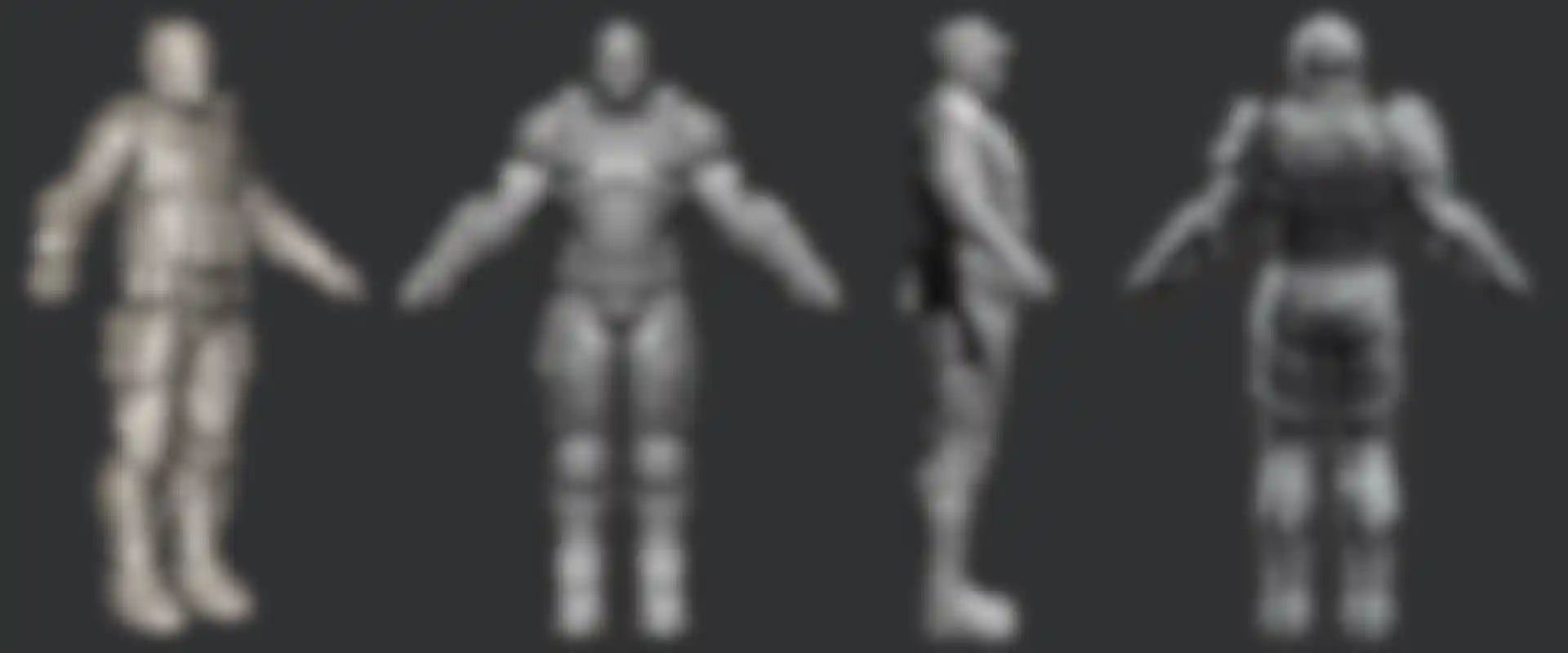
You've also seen significant advancements in ZBrush since you first started using it. How have those changes affected you?
Herbert: Greatly! I remember the first ZBrush version that I used was 2.5. I had to sculpt my characters in pieces because of the polygon limit and there was no SubTool Master or Decimation Master at the time. I sometimes like to generate my normal maps outside ZBrush and my AO with Mental Ray. Without decimation master, getting the best results outside ZBrush was very difficult. The new selection of brushes is awesome as well. With each update, sculpting in ZBrush feels more like sculpting in real clay but with symmetry, undo and “save as” enabled!
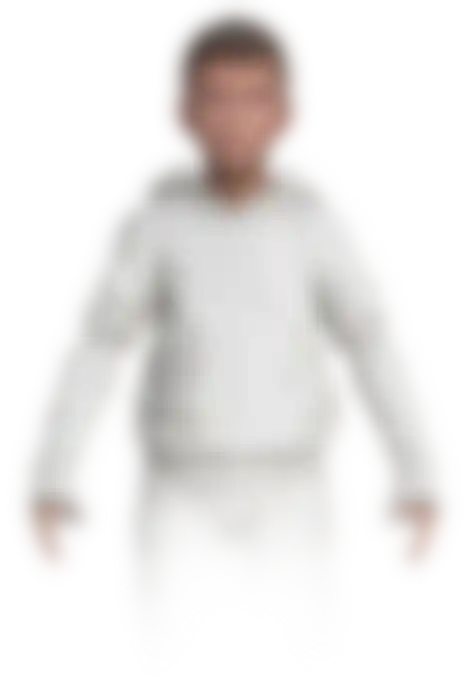
Rafael: I kind of adapted my workflow when I first started using ZBrush, so all the changes haven’t really impacted my work. But for sure tools like the new DynaMesh, SubTool Master and Decimation Master, sped up my pipeline like crazy.
I use DynaMesh a lot to concept new characters and ideas. Decimation Master is a must now for the pipeline in all my projects.
Rodrigue: Again, speed. The workflow is getting smoother and all the new brushes and layers give us so much flexibility and creative freedom. One of my favorite parts is the sculpting feel. I don't feel like I’m moving points around anymore. Now I feel like I'm actually sculpting. That feeling is great and because it's so fun I try to stay inside ZBrush as much as I can.
What were your artistic goals going into Mass Effect 3? How did you go about raising the bar when ME2 had already pushed it so high?
Herbert: I joined the ME3 team because I felt that the Mass Effect character art team is one of the strongest in the industry. With Kolby Jukes, Rodrigue Pralier, Jaemus Wurzbach and Rion Swanson all setting the bar very high, I wanted to learn and grow as an artist. With Rafael Grassetti joining the team, the bar was pushed even higher. It is great that I am growing and learning from my team. There is always something new to learn every time I go to work.
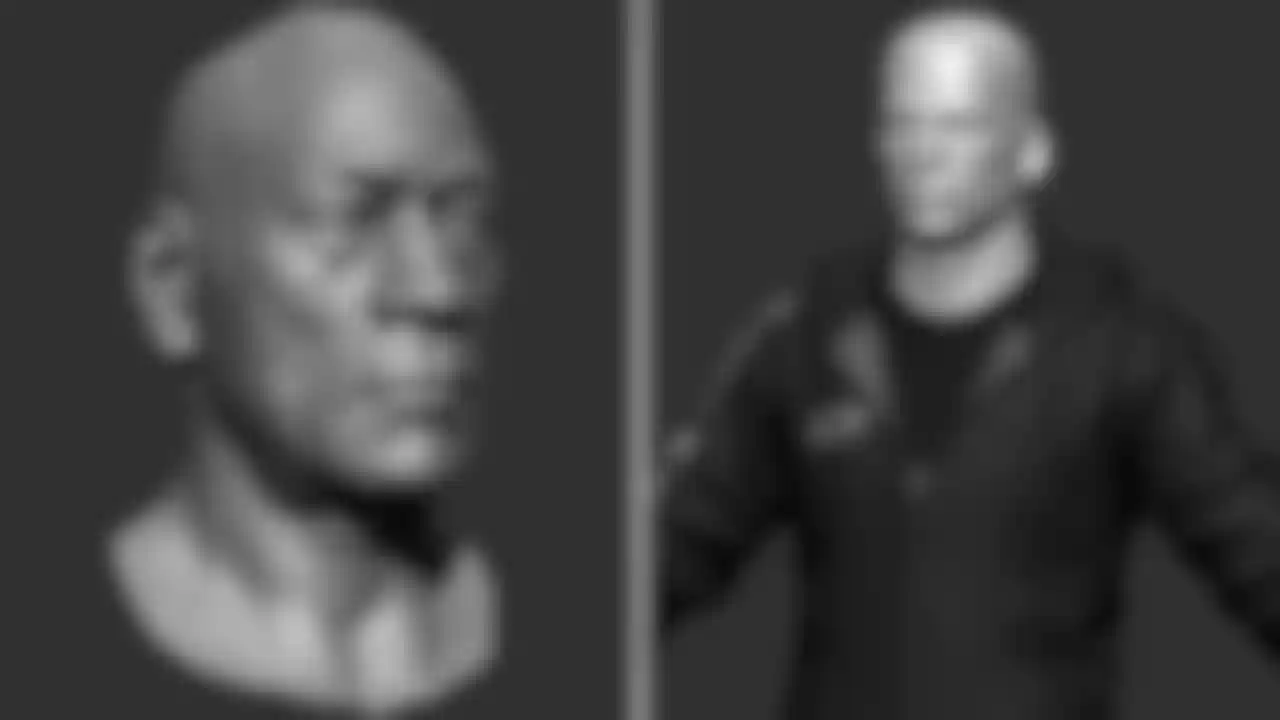
Rafael: We basically re-worked all the characters from ME2. Since we were re-using character models from ME2 we couldn't change their topology and rigging. So we used ZBrush to re-work the details, often redesigning the character from scratch and improving all the normal maps and textures.
Rion: One of the things here was to work to further unify the character factions. Cerberus and the Reapers are the largest groups and so even though different artists were working on characters within the same group, we tried to keep a strong sense of unity. Once the first character within the group was established, we’d use it as a benchmark to follow. Using the same master material, following the same look of the textures and re-using parts where we could all helped keep a cohesive look.

How successful were you at accomplishing those goals?
Herbert: I am still learning every day.
Rodrigue: I think we were happy with the result while we were working on the models. But near the end of the project we started to see all these elements that we wanted to redo and make even better but we had so much to do that we weren't able to do that. I think it's every artist’s curse: as soon as you are done with a piece you already want to go back and change things. We will do better next time. :)
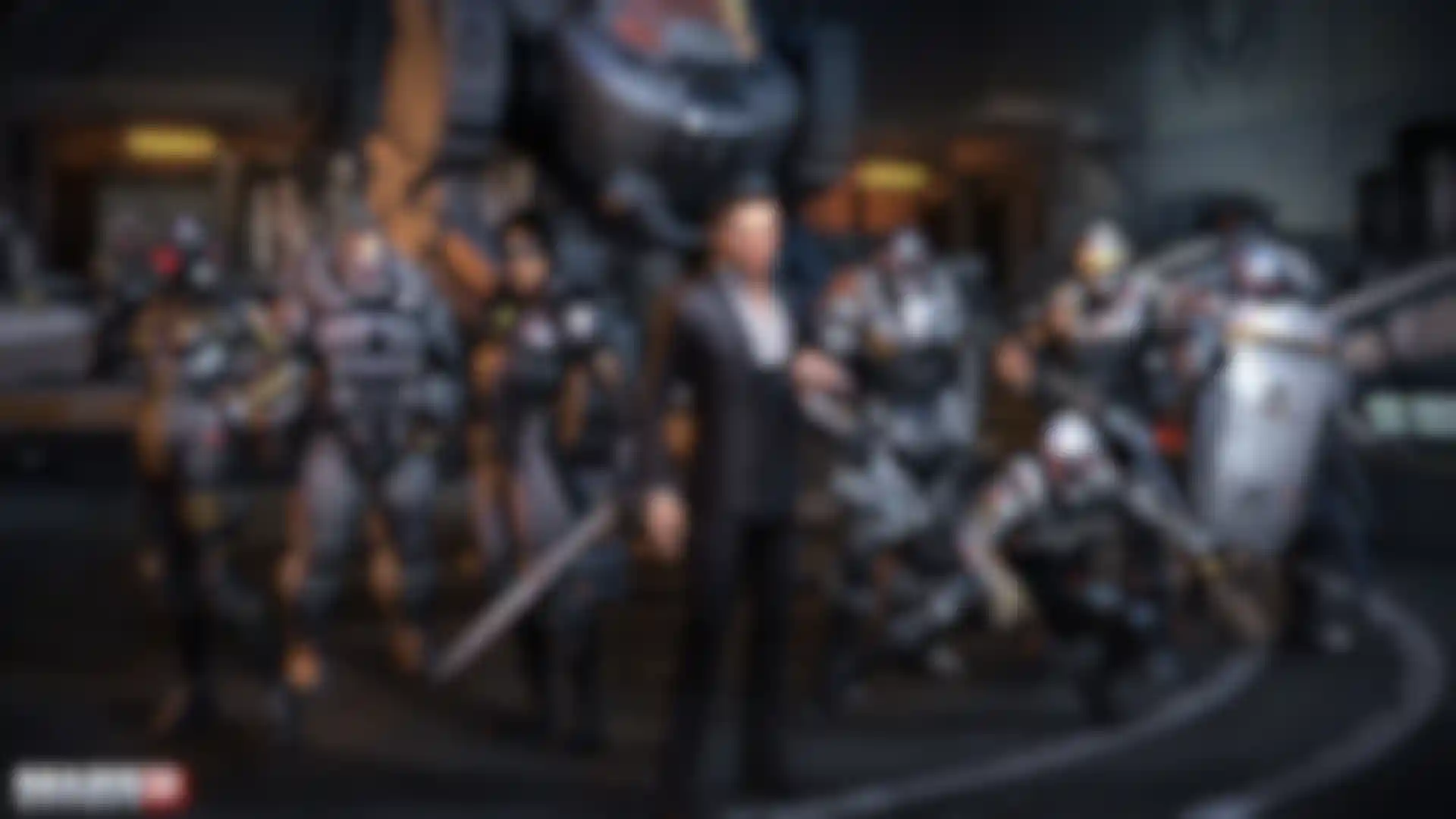
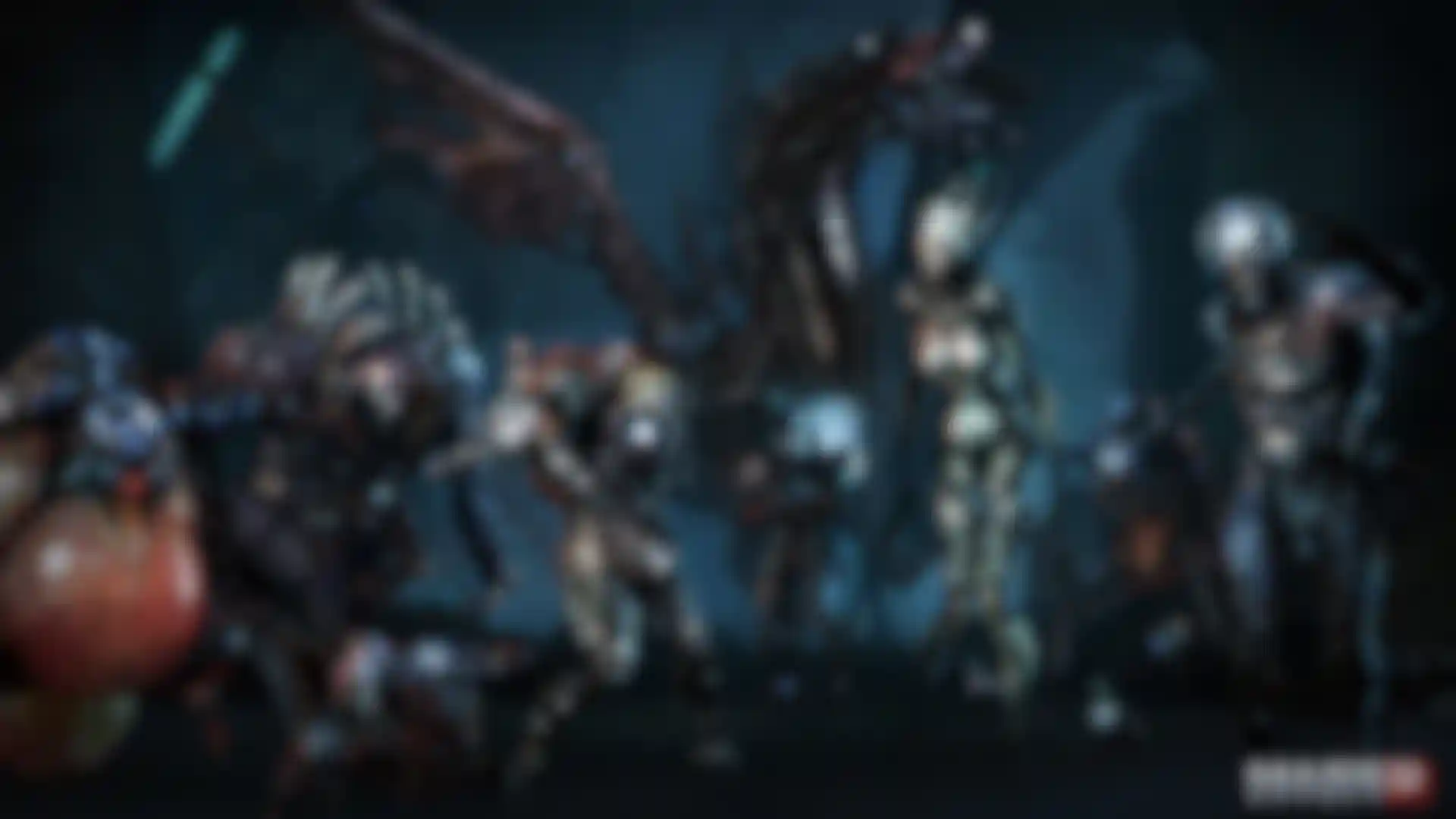
Rodrigue: The first part was to gather great artists to work together on an ambitious project and to all motivate each other to push the quality of our assets higher. But it was really the evolved art direction of Mass Effect that gave us the opportunity to truly show what we can do. Compared to ME1 and ME2, ME3 is more "realistic" (if I can say that for a sci-fi video game!). We focused on the mix of materials, layering and the shader contrast. We worked more on cloth and folds sculpts in this game than either of the previous ME games.

We mixed metal parts with leather parts and fabric parts, etc. It was all that to give a more rich and appealing look to our characters. One thing that amazed me when I looked at the 2D concepts was how the 2D artists were able to render all the different materials in 2D: chrome, steel, gold, etc. -- everything was looking so great on paper that we decided to spend more time on our shaders to be able to stay true to the concepts. Also, we were really focused on capturing all the elements of the 2D designs by adding even more details and interesting shapes when doing the 3D models. The worst thing is when you see amazing concepts and when you look at the 3D model you realize that the 3D artist removed elements to make the job easier. We try to do the opposite by taking the concept as the minimum required and then trying to push it even more.
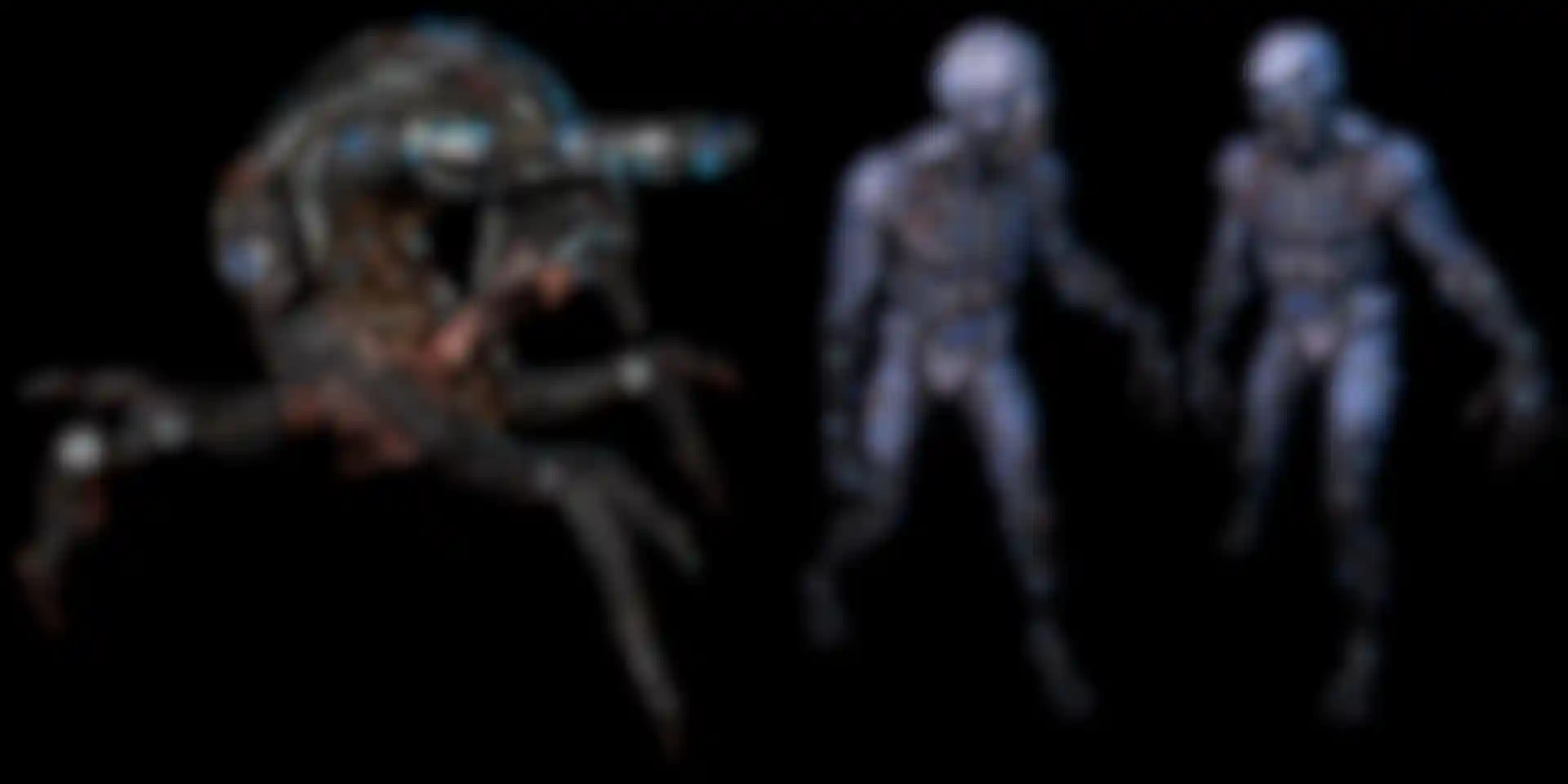
How much were you able to carry forward from ME2? Was there anything that you significantly re-worked like what you did for the Salariens with Mordin?
Herbert: I was very fortunate to be able to re-work some old assets from scratch. Some of the Krogans, Salarians, Turians and Quarians were re-worked. They just didn’t hold up as well with our new shaders and higher in-game tech limitations.
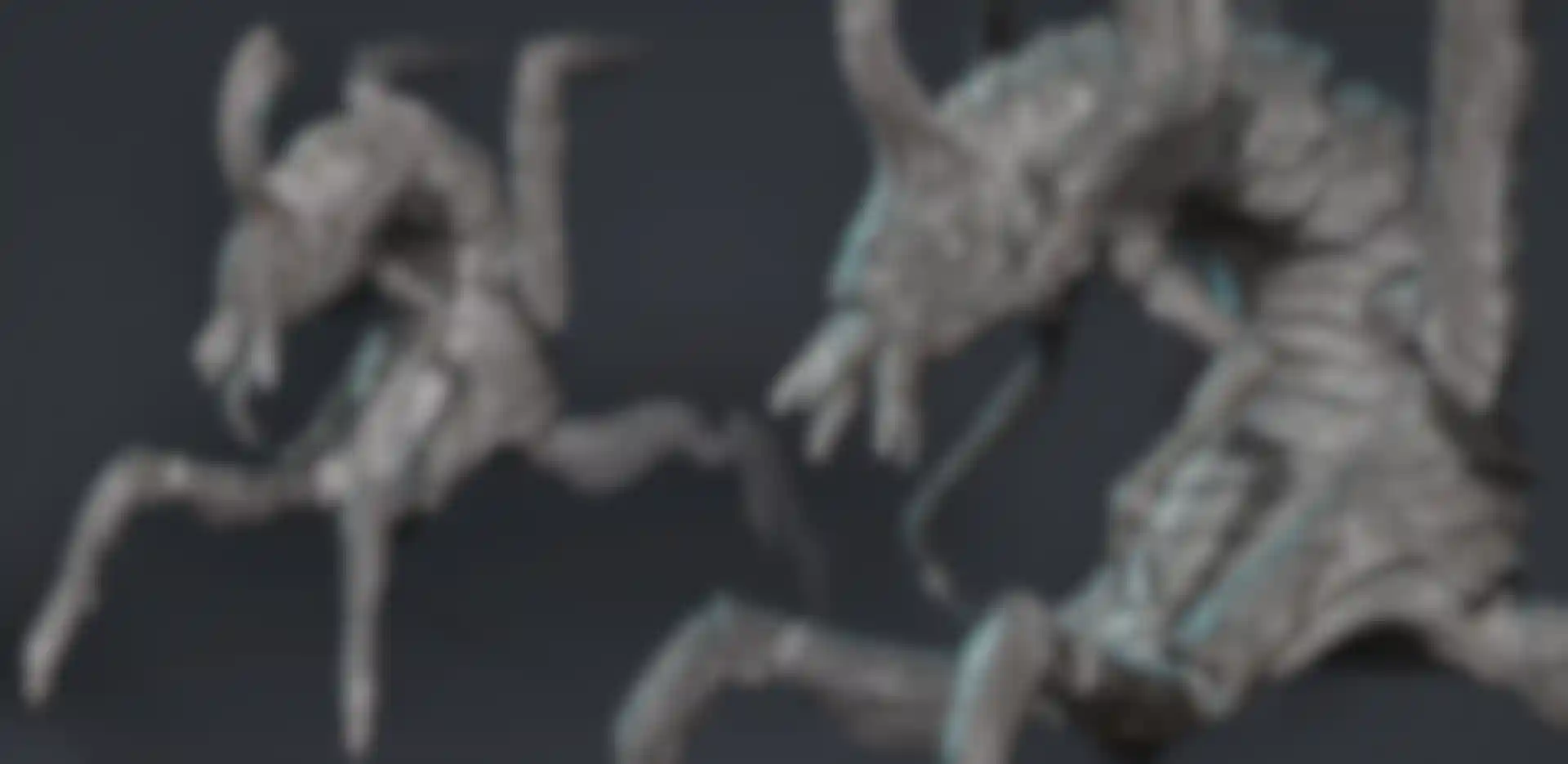
Rafael: We had to re-work almost all the assets we used from ME2. I had the pleasure to re-design the Keeper and Rachni Queen. I did this by using the same base model and with ZBrush I changed all the details and textures. For other models like civilians and romance bodies we added more details on top of the existing models using ZBrush and re-working normal maps and textures.
Rodrigue: We tried to re-work everything. It wasn't a small task but it was great to take assets from previous games and push them further. All the ambient characters, the faces and the ships were re-worked. We wanted to stay true to the ME universe but we also wanted the overall look of the game to feel more elaborate and polished than ME2. From ME2 I was able to re-work the Illusive Man’s suit, as well as Kaidan’s and Shepard's faces.
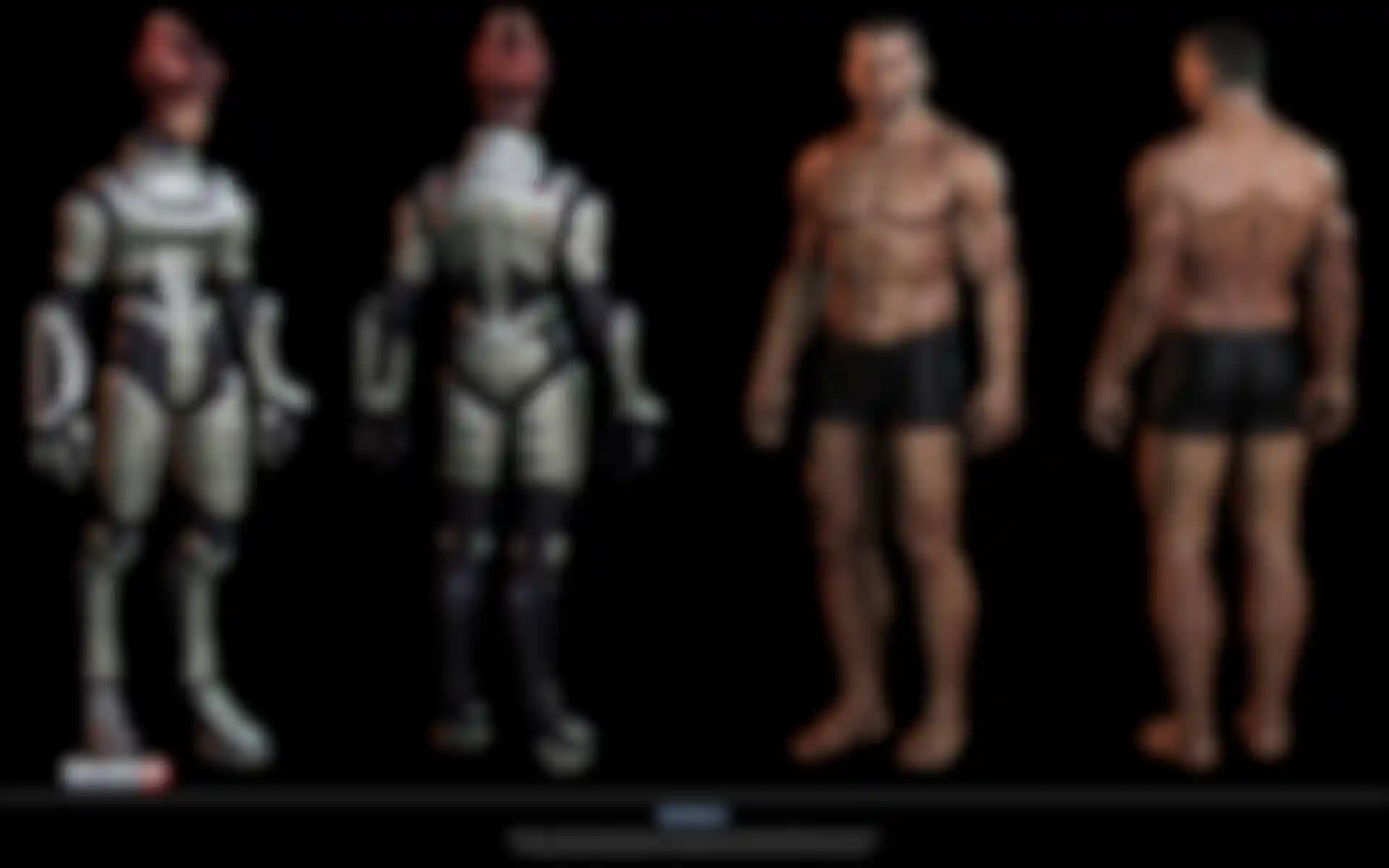
Could you show us an example of how a character evolved over all three titles?
Here is a comparison shot (see above) of the N7 armors since ME1. Jaemus Wurzbach was in charge of Shepard's iconic armor. He did a great job keeping the essence of the armor design and bringing it to a new level between ME1 and ME2. He pushed it even more on ME3 by adding more details, more pieces and more shader work to make the armor look more tough and combat-ready.

How many new characters/figures were created for ME3?
We stopped counting when we reach 100 characters! That number includes all the new characters present only in ME3 with all their costume variations, along with all the ME1 and ME2 assets that we completely re-worked. The scope was very big but it was fun and we managed to make all the assets onsite without using any outsource help for the characters.
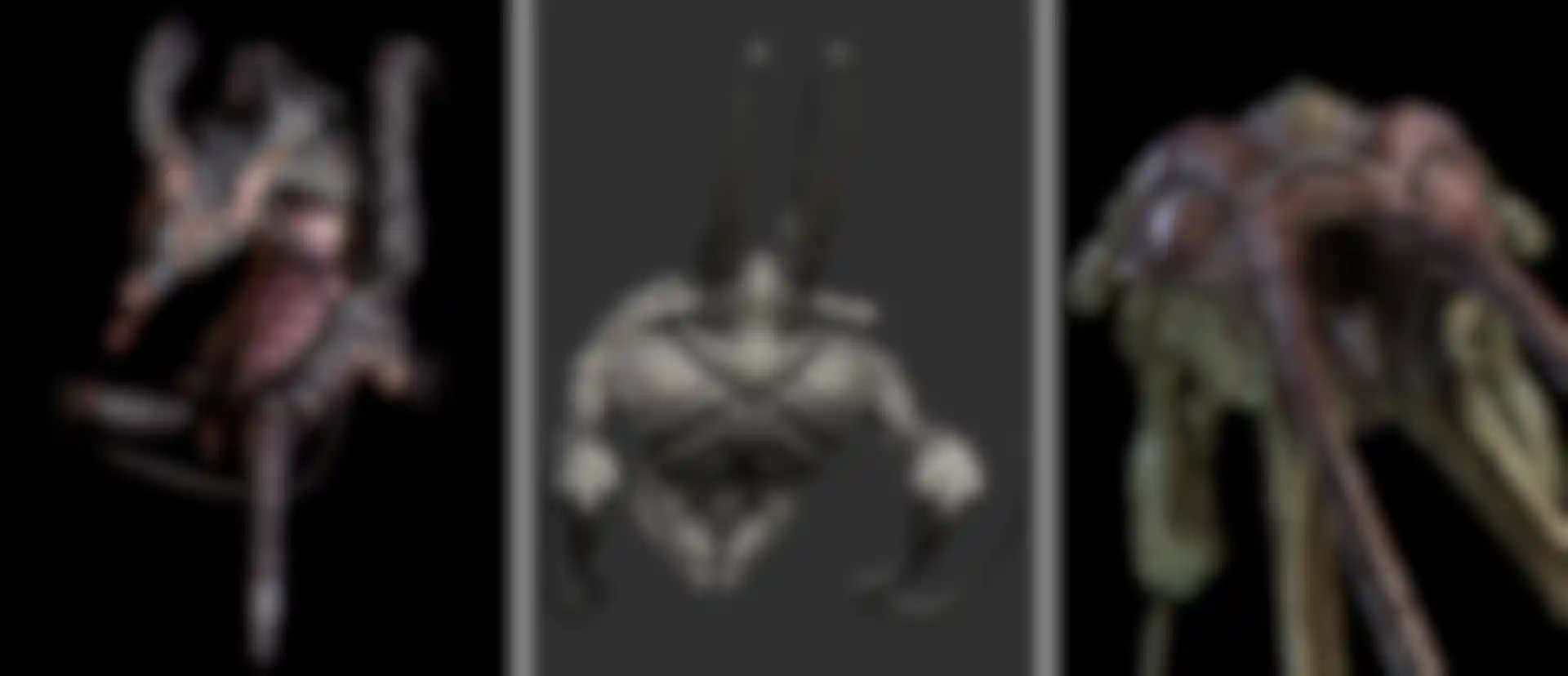
How did you use ZBrush for Shepard and his squad? How was it beneficial for things like armor?
Herbert: For the humanoids armor, ZBrush was used mainly for the cloth and rubber areas.
Rodrigue: We used ZBrush on all the faces, but also on most of the armors for the cloth and leather parts. In ME1 all the folds were modeled in 3Dsmax and were very basic but with ZBrush we were able to bring greater realism to our more organic parts.
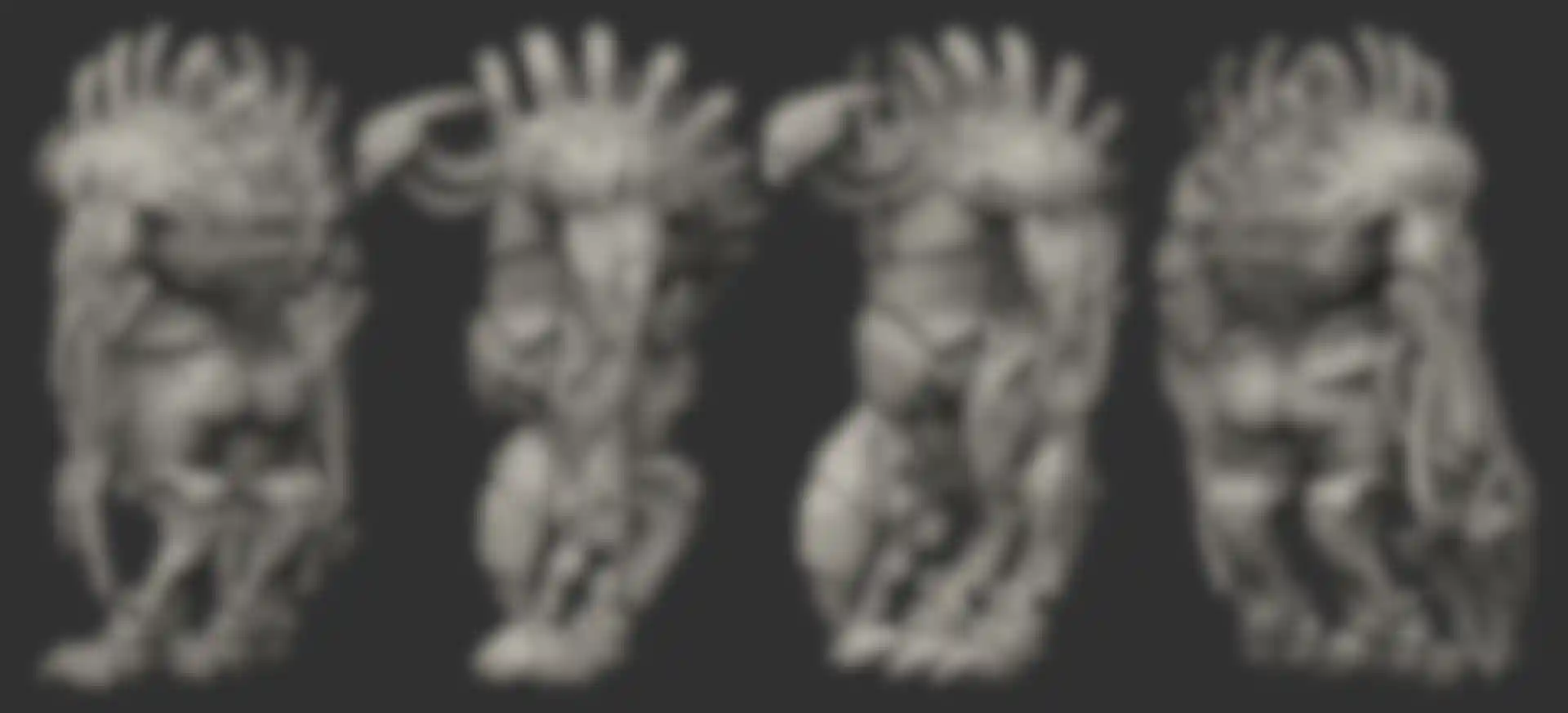
What are the advantages to using ZBrush for concept creation as opposed to traditional methods like going from a drawing to the game's base mesh and then finally to detailing?
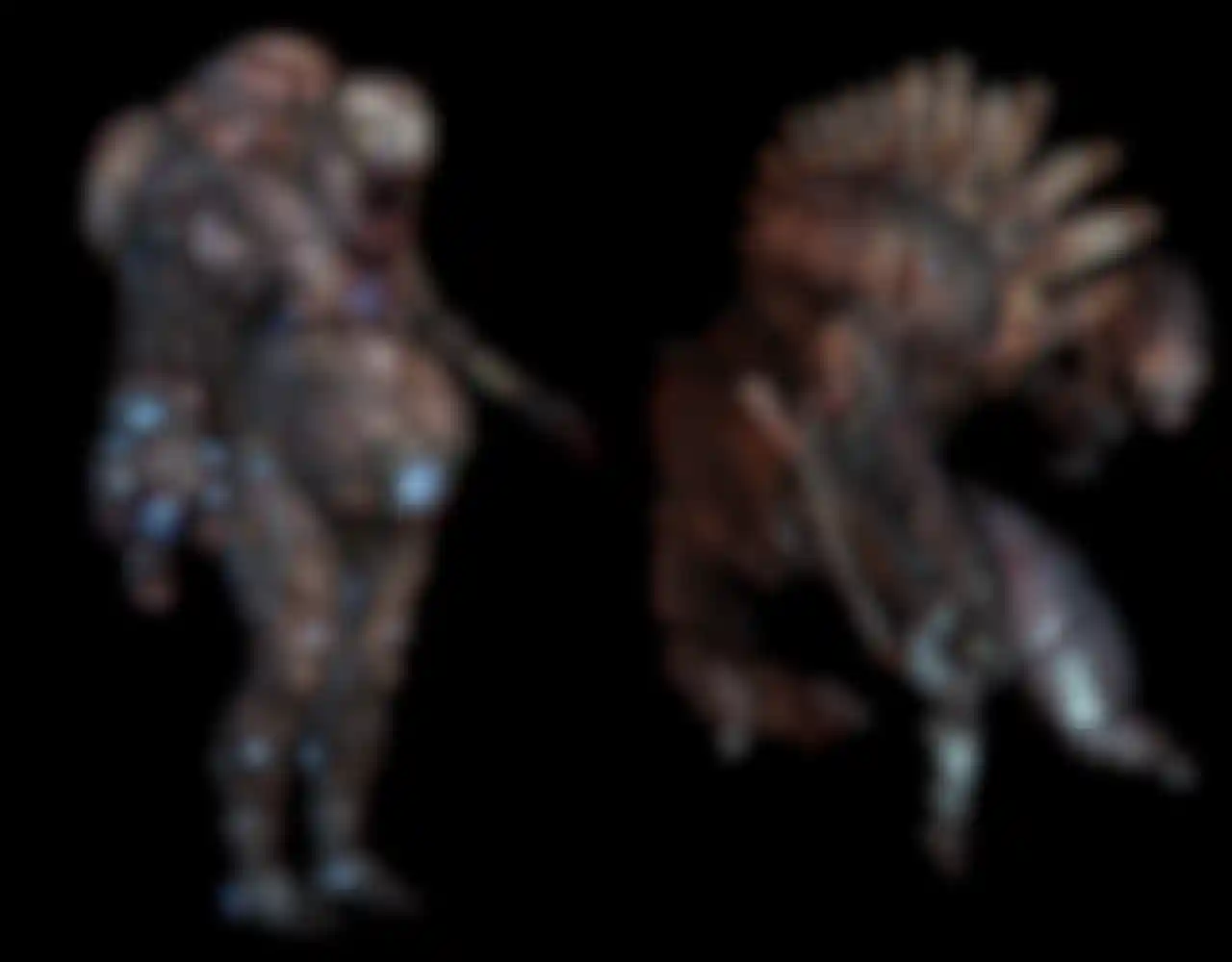
Rafael: With ZBrush it is really easy to play with shapes and try different designs. The best thing about doing concept creation in ZBrush is that you have a base to start modeling on top of or a 3D feeling for how the character will react later with skinning and with the other characters in the game. On the other hand, it’s really slow to do a lot of major variations. So if you don’t have a base idea to start sketching in 3D the work can become useless in the hands of the art director.
Rodrigue: I used ZBrush on some armors to quickly test designs as well as different shape and size variations. It's really fast, especially when the team is not sure about a specific design. With ZBrush you can quickly make 3D propositions to show to the Art Director and the rest of the team. Seeing the design in 3D helps to make decisions; a 2D concept can be interpreted differently depending on who looks at it but with a 3D model it’s easier to get everyone on the same page.
What techniques in ZBrush do you find work best for detailing characters?
Rafael: ZBrush has a lot of brushes that truly help the detailing process. I don’t find myself playing a lot with alphas and other tools. Only brushes and patience are needed to handle the job.
Rodrigue: Like Rafael, I mostly use simple brushes and a lot of work and patience. But I would say that sculpting layers are still my favorite tool in my pipeline. I sculpt almost everything on different layers. With that I can boost or reduce the effect of my sculpting or delete it and do something different. Or I can close the mouth of a character or re-size the arms and quickly show the difference to the Art Director. I do use alphas and Drag-Rect once in a while. Or in the case of faces I texture them and then convert the texture to a mask and use that mask to add some details. When I do use these two techniques I always do it very subtly and add most of my details by hand. It's just the best way to get exactly what you want.
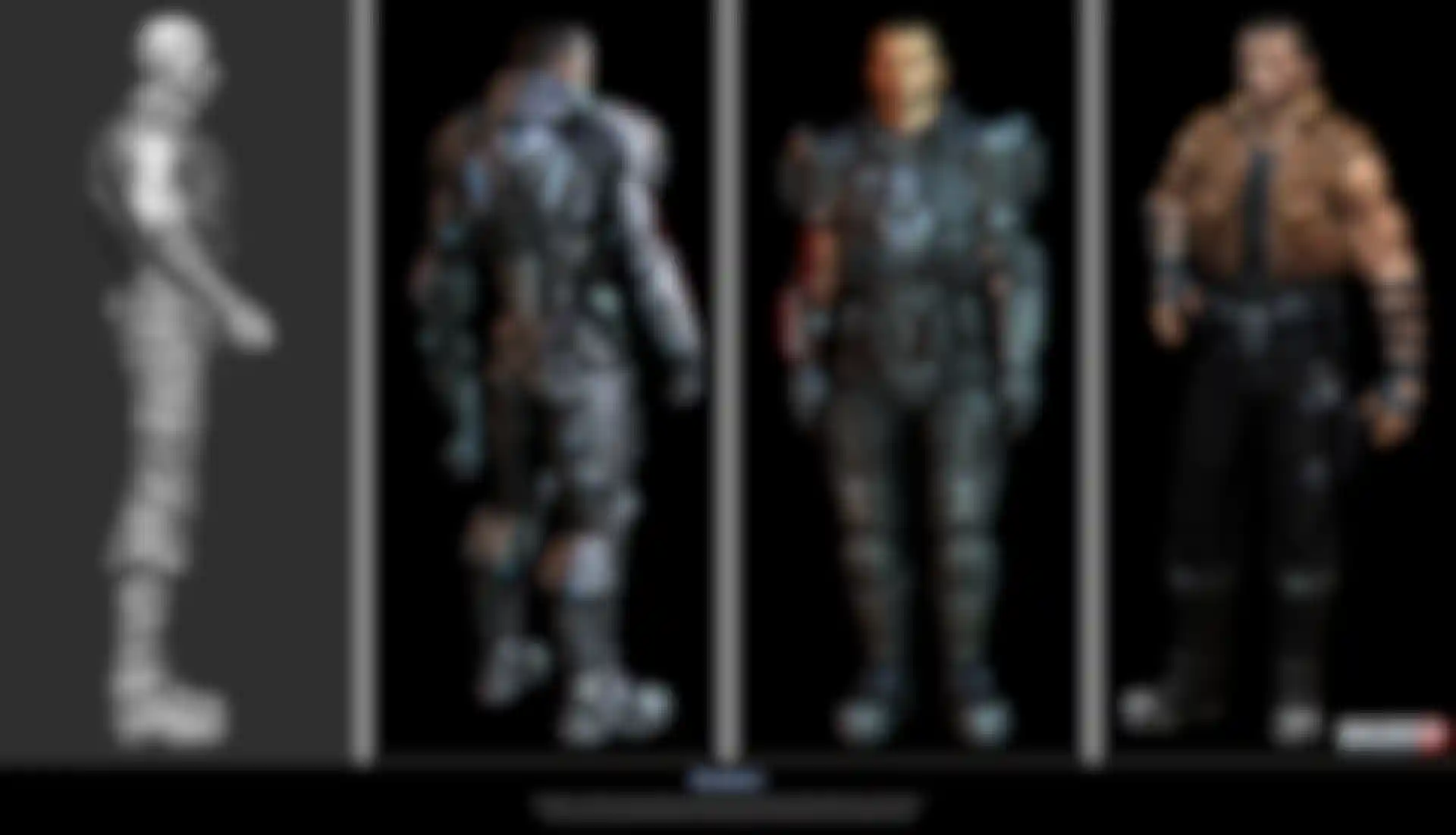
With the various Reapers you really got to go all out creatively. How did ZBrush help with that?
Rodrigue: These guys were a lot of fun. We had concepts but they weren't precise. The team really wanted us to have more room with these guys and they are the characters that the 3D artists changed the most. We really had the opportunity to just let loose in ZBrush and let the sculpt talk. After so many armors, it was great to be able to go with an all ZBrush sculpt on these creatures. The Cannibal, the Banshee and the Brute had multiple revisions based on gameplay requests. Using ZBrush, we were able to quickly make them and propose different solutions.
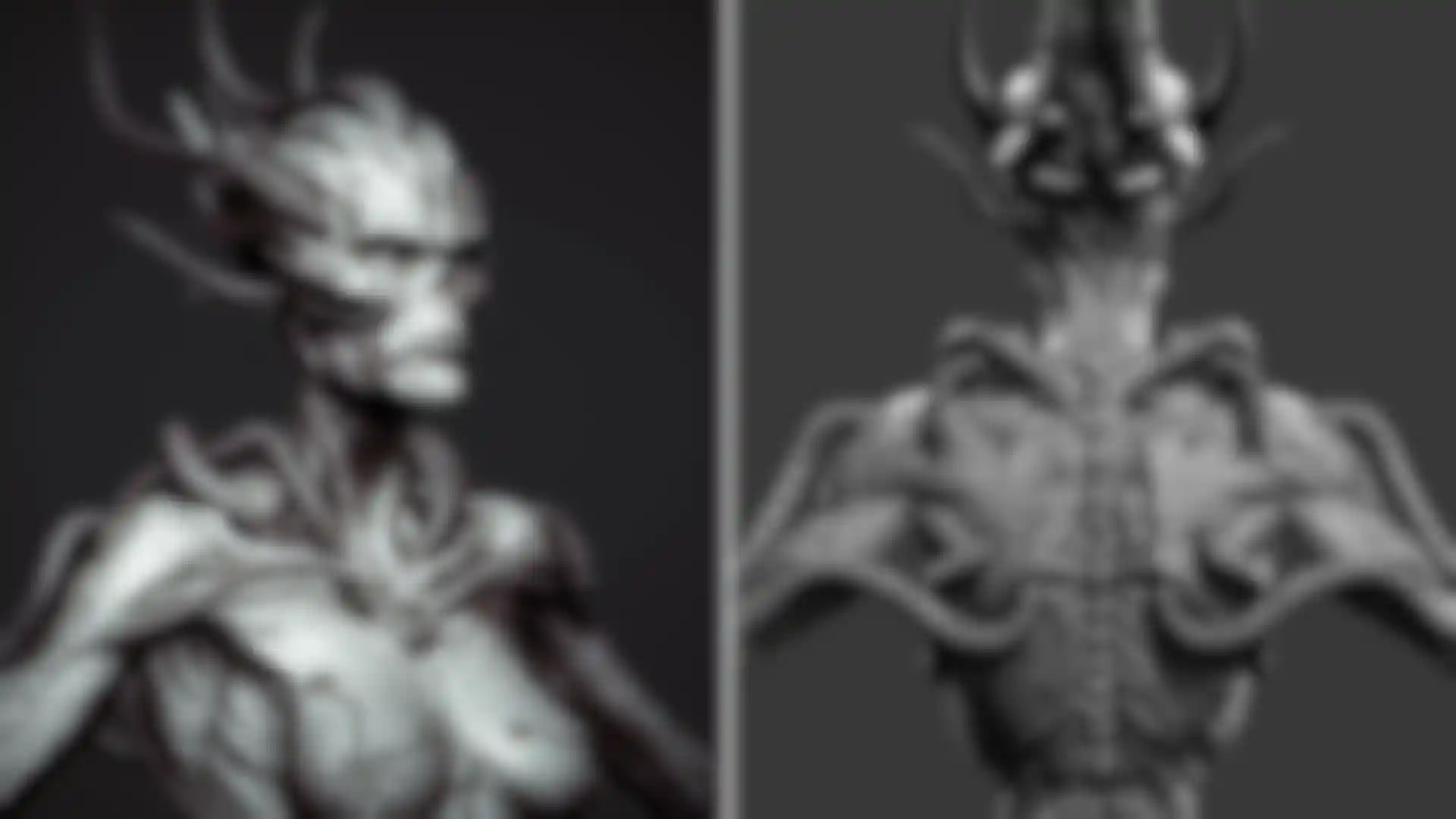
What was the most challenging asset for ME3?
Rodrigue: I think it was the female characters in general. It's so hard to get a female character that pleases everyone. Whatever the project, the female characters are always the ones that need the most iterations because we all have a different idea of what a beautiful woman looks like.
The Reapers were also a challenge because on the tech side these guys are so big it was tough to get them running in the engine while keeping them looking awesome.
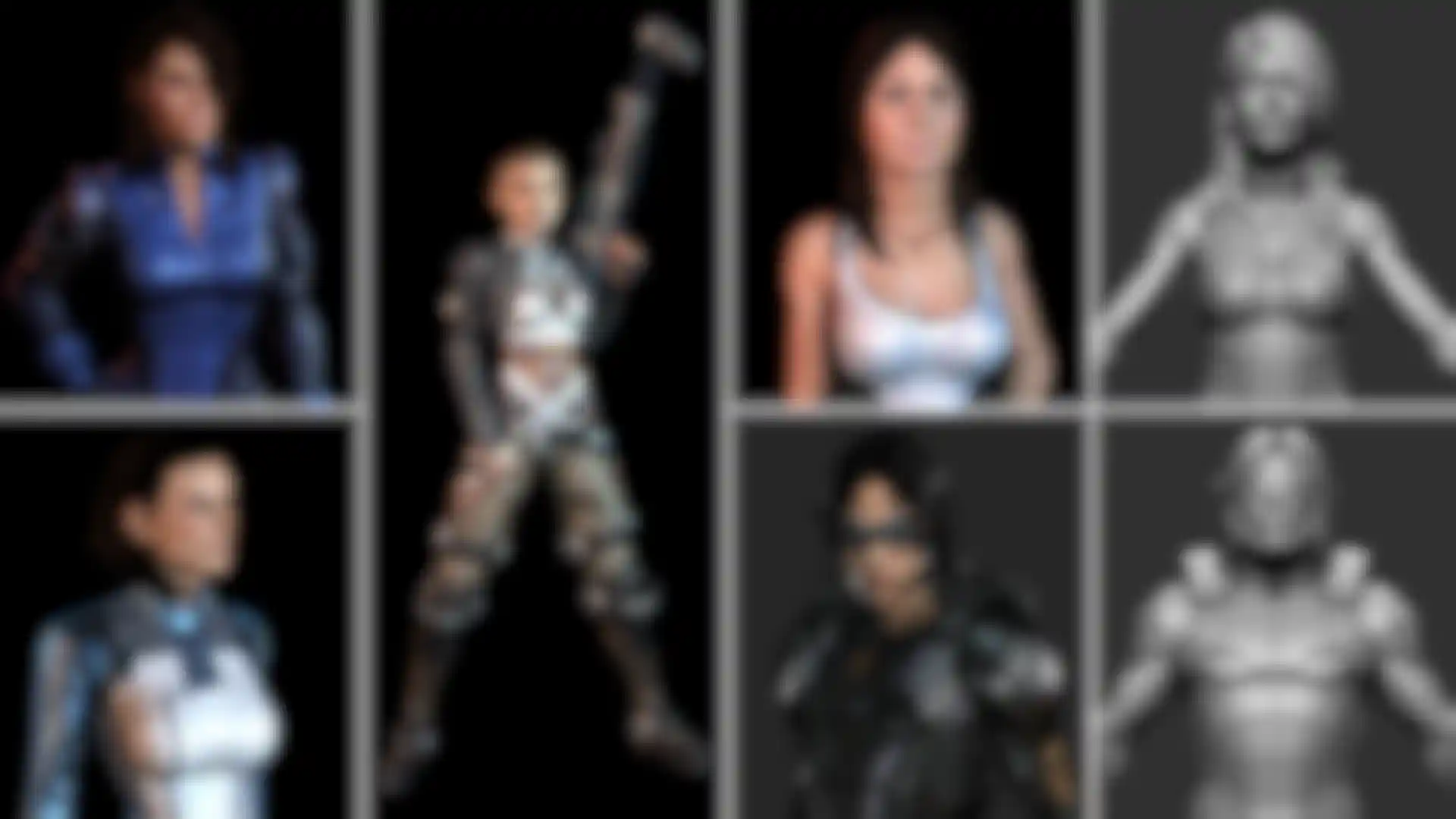
Now that we've been exposed to the scope of the Mass Effect universe, which has been your favorite character?
Hertbert: Liara! I have loved her since the first Mass Effect. She has such a great personality and voice. And her powers are very useful as a squad member. Wrex is also another favorite because he has that awesome facial scar. Jack because she is very attractive and has lots of tattoos.
Rafael: I guess we all love the Krogans but my favorite character from the Mass Effect universe is Thane. I love the design and the personality behind the character. From ME3, Kai Leng is my favorite -- the work with the creation, design and modeling on the character is amazing!
Rion: Admiral Hackett turned out to be a really great character. The model, the dialogue and the voice all worked well together. When playing through the game I felt he was just very believable and I enjoyed reporting to him throughout the game.
Rodrigue: I love Jack. It’s too bad we don't see her more in the third game. EDI is also my favorite. I love what Kolby Jukes did with these models. I also love the mech dog in the Normandy. He is funny and I'm sure he is smarter than he looks. :)
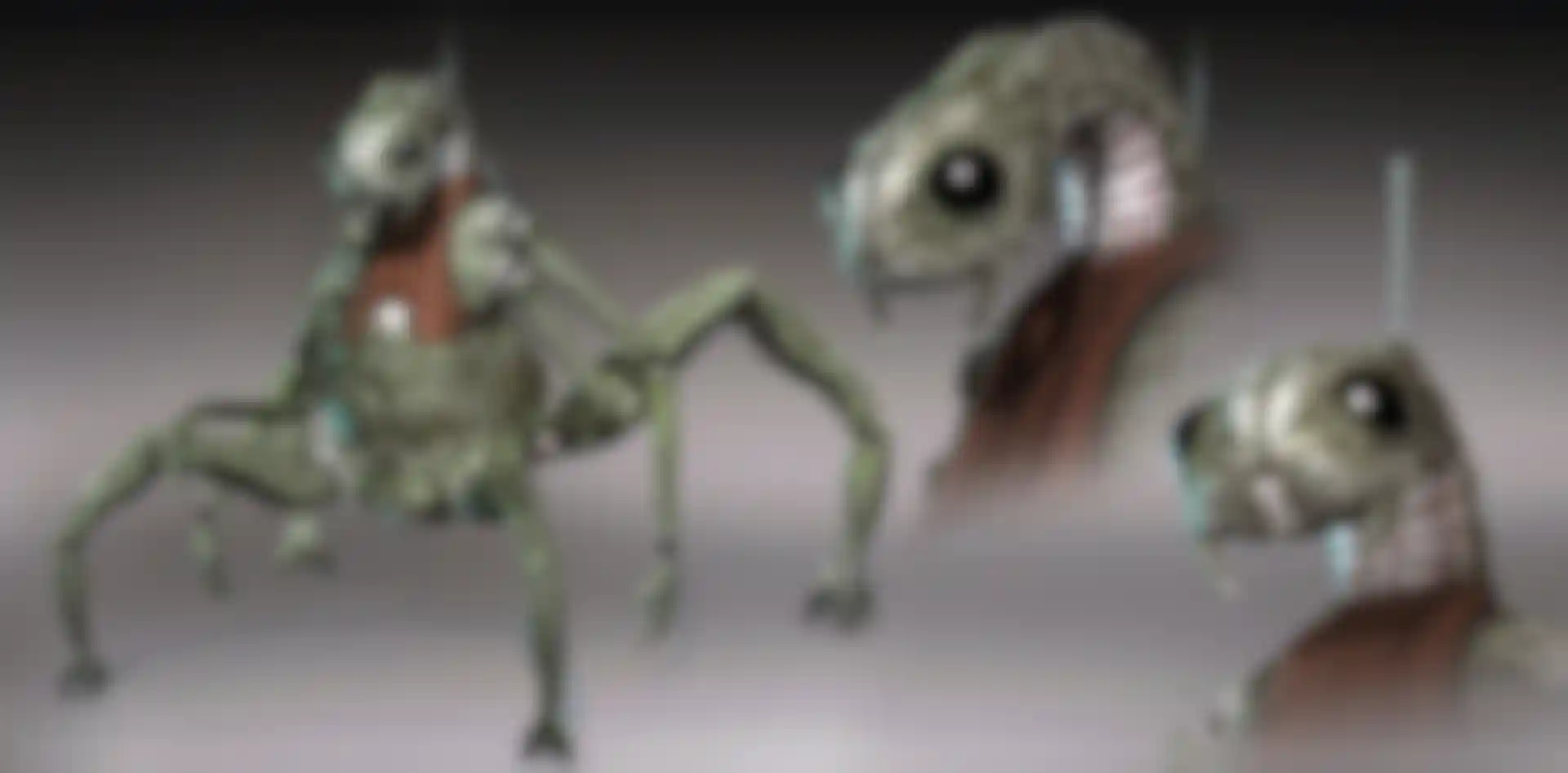
What was your favorite asset you worked on?
Herbert: Garrus’ alternate armor for DLC. The design was very interesting, a bit of a mix from the traditional Mass Effect style and contemporary military style. Because of that, I could put so much weathering and battle damage on the armor. The grenades that he is carrying on his straps also give him an interesting silhouette.
Rafael: The party members are the best models to work on but different characters that allow you to relax and just play with ZBrush are still my favorites to work on. I guess from ME3 the Keeper was the most fun to work with.
Rion: The Prothean, Javik for Mass Effect 3. Mordin for Mass Effect 2. Both of these characters had lots of unique armor and costume shapes. The head sculpts were also great fun to model. The Prothean was the first (living, breathing) of his kind in the series, so aside from some Collector references there was no model to start with. That made it even more interesting. Ben Huen did an amazing job with the concept. I loved the entire design, so was thrilled to work on the character. Further, a lot of work was put into the facial animations with special attention going to his eye movements.
Rodrigue: He is an ass in the game but Kai Leng was a lot of fun for me. I really liked what the concept artists did for him and I was hoping to get him -- I was very happy when that happened.
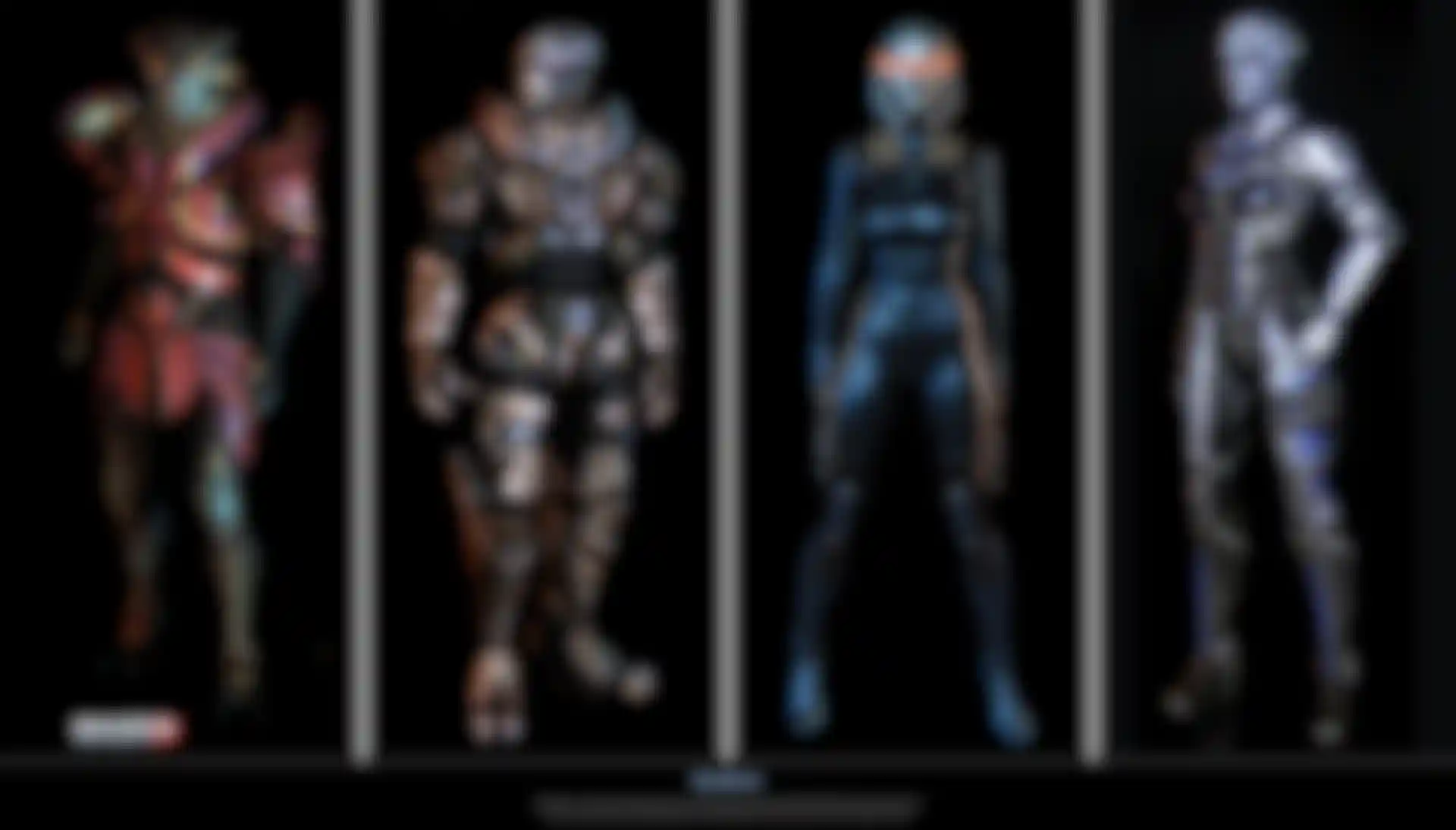
Of course, with any project there's always room for improvement or things you'd like to have done if you had enough time. What would you say is the biggest of those for ME3?
Rodrigue: Basically all the assets we did at the beginning of the production, like in the first six to eight months. They were good but at the end of the production we had so many new ideas for armor designs, new shapes, new shaders, etc. that I felt like I wanted to go back and bring all this new knowledge to the first assets we did. But it's like that on all productions and that's what keeps us motivated for future projects, because we want to use this new knowledge more and we want to keep learning new things.
Is most of the art team still involved for the DLC? Or have people moved on to other things?
Rodrigue: Ahah! I can't say much. To this date we are still supporting ME3 while working on other projects but I can't say more than that. :)
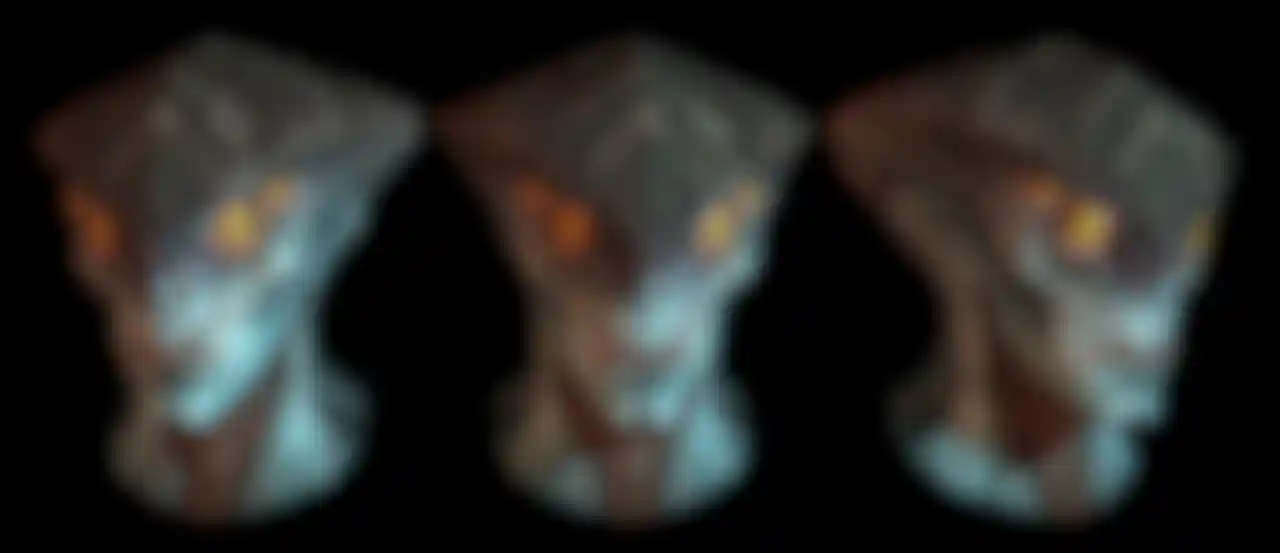
This is probably your last chance to speak as a team to the ZBrush community. Is there anything else you'd like to say while you have our attention?
Hertbert: Big thanks to Pixologic to keep updating ZBrush with awesome new features, ZBrushCentral is a great forum for people to get inspiration and feedback to keep growing as artists. So keep posting!
Rafael: ZBrushCentral for me is one of the best communities online. All the tools you need to learn are available online. Keep studying and building your portfolio because we always keep an eye on ZBC!
Rodrigue: Keep rocking, Pixologic! Every new release is amazing and the ZBrush community is huge and full of awesome artists. What you do is great, so continue doing it.
And to all the characters artists out there: like Rafael said, we always keep an eye on ZBC.
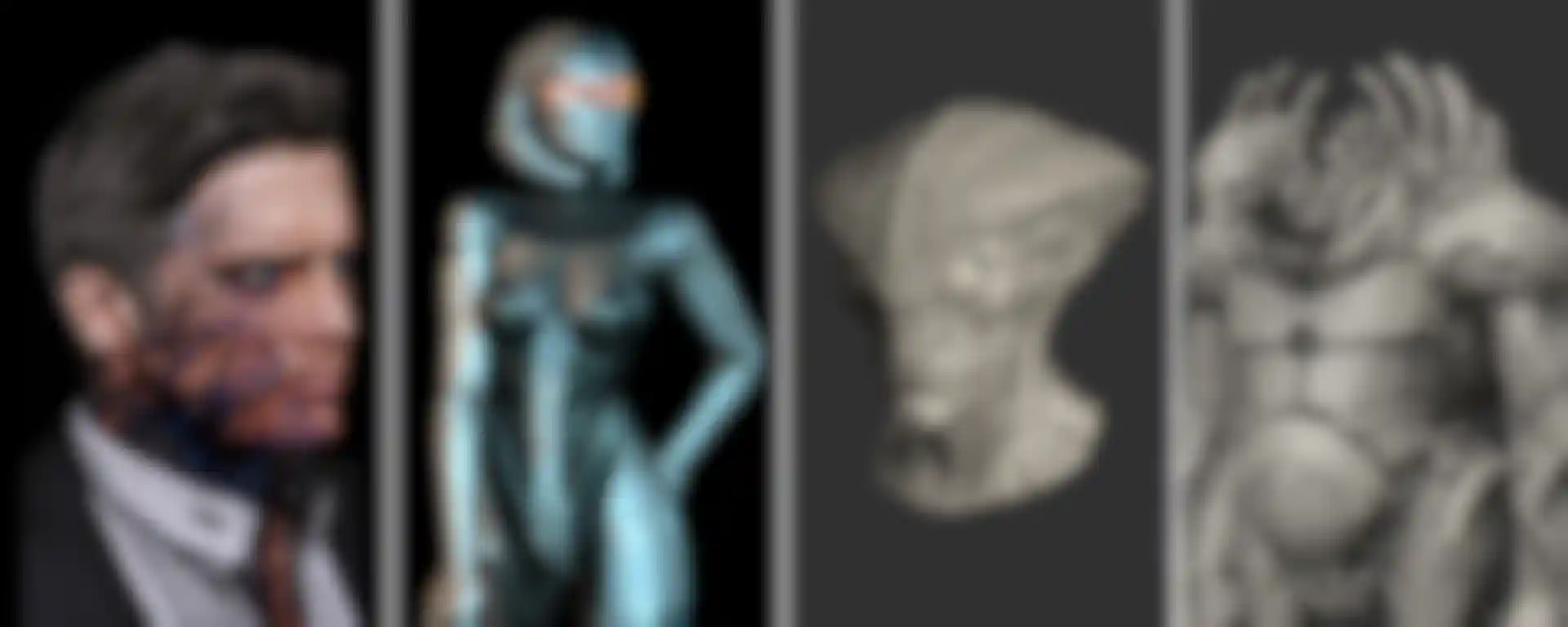
We really can’t say thank you enough to the art teams at BioWare. Your dedication to the art of game design and your continual enthusiasm to share your behind-the-scenes experiences has made for a really great ride. We wish you all the best as the Mass Effect artists transition to new projects.
Thanks also go to BioWare and Electronic arts for allowing both the interview and the display of so many assets from during the project’s development!